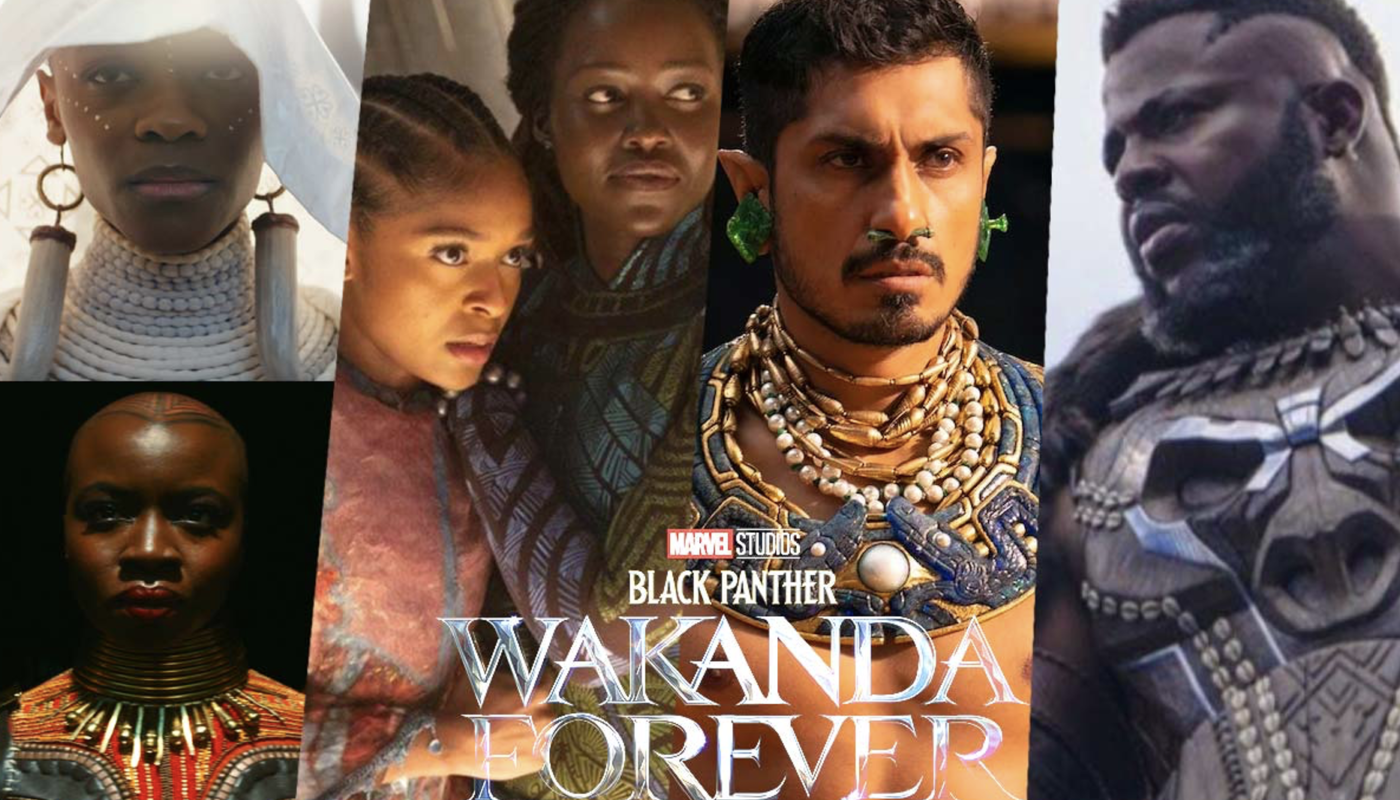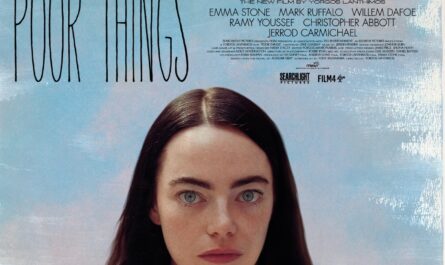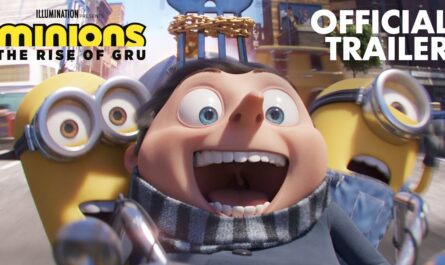Is Wakanda Forever using Tokenism?
If you don’t know what tokenism is and haven’t read my article explaining it, make sure to go ahead read it here.
In the cosmopolitan world that we live in today, as humans we are still categorized by different colors. No matter how much we have grown as a society, we still face the consequences of discrimination, especially in the film industry. Whether you want to be an actor, director, screenwriter, producer, director of photography, composer or even cameraman, the biggest industries in western societies continue to prefer Caucasian representation as the status quo. Not only in Hollywood, but in most countries, there is a preference for either Caucasian or light skin representation, and it continues to be a problem in both screen and stage.
It is incredibly difficult to get into the biggest film industries with high investment productions. Anyone who wasn’t born into the industry or with the resources and contacts to do so will struggle, especially those who face discrimination and are judged for their skin color or social class instead for their professionalism. Big industries like Hollywood should have changed decades ago, it is high time they become more inclusive and representative, more importantly if you know the history of the film industry and the numerous ethnicities that contributed to its growth. Representation matters, mainly because viewers come from a variety of backgrounds and film consumers are not just white Americans.
African Cultures as Inspiration
Supposedly, Black Panther was inspired by Africa. But what does “Africa” really mean? Many people view Africa as a homogenous culture, when in fact, Africa is composed by 54 countries, each with its own history and traditions. Many of these cultures are heterogenous and multicultural themselves. Africans have one of the widest and most complex phenotypic adaptations due to contrasting climate variations, diverse diets, and exposure to different diseases. Did you know that the tallest people on earth are the Dinkas, who live in South Sudan with an average height of 6 feet but can go as high as 7.7 feet. The most interesting thing is it shares a border with Central Republic of Africa, which has the smallest people in the world, the Pygmies, with an average height of 5 feet (Gomez, Hirbo, and Tishkoff; 2014)?
Lesotho: country located in South Africa. Paradisiac territory surrounded by mountains and valleys that helped Lesotho reach its political independence. In the Neolithic Period, the predominant civilization was the kingdom of Khoisan speakers and hunter gatherers. In the nineteenth century, the Sotho, another civilization ruled by Moshoeshoe I, invaded and controlled the land. Fast forward to the British invasion, Lesotho became a protectorate and part of the British High Commission Territories. However, in 1966 Lesotho gained its independence.
Today, Maseru is Lesotho’s capital and since 1990 it has impulsed the diamond and touristic industry, regardless of environmental harm, to grow financially into one of the most popular countries in South Africa.
Temperatures in Lesotho’s lowlands range from 32oC to -7oC. In the highlands the temperature can go as low as -18oC and frost is common in the winter, as well as snow in the Maloti Mountains. In the 1800s zebras, ostriches, and lions habited Lesotho, unfortunately due to hunting and deforestation, most animals found today are small.
The Sotho (or Basotho) represent majority of the country’s population. Politically, diverse chiefdoms have led the nation and a strong cultural identity within the Sotho remains until now. The Zulu, a small cultural group with Asian ancestry, are part of the minority amongst Europeans who migrated to Lesotho after retiring. Languages spoken in the country include English, Sotho (or Sesotho), Bantu, Phuthi, and Xhosa.
South Africa: South Africa has one of the most beautiful landscapes in the south of the continent, which was inspiration for Wakanda’s landscapes. The biggest inspiration is called Blyde Canyon. The canyon’s real name is Motlatse Canyon, which was named before colonization, however when a group of Dutch pioneers found it in 1844, they called it Blyde Canyon because it reminded them of how homelike it felt for them being there, it means “river of joy”. In 2005, authorities decided to name it Motlatse Canyon again, but locals and tourists still refer to it with its previous name.
Zulus are also present in South Africa, they speak IsiZulu, which is one of the 11 official languages of South Africa. Regardless of the linguistic variety prevalent in South Africa, around 20 million people speak IsiZulu, as well as people in Malawi, Swaziland, and Lesotho. Zulus reside in rural and urban areas, they are present in the south of the African continent, and every year they celebrate several ceremonies, like Heritage Day and Reed Dance Festival, which help keeping their culture alive. Another key of inspiration from the Zulus within Wakanda’s habitants are the Sangomas. They are divine healers of the Zulu community; they have supernatural and psychic abilities that allow them to communicate with the ancestral spirits on behalf of their relatives. This practice is similar of what Shuri did in Wakanda Forever, attempting to communicate with T’challa.
Afrofuturism: Afrofuturism is key in accurate representation and inclusion of African people and black communities in the Black Panther universe. It started as a socio-political and artistic movement that fights on visibilizing black musicians, artists, writers, philosophers, fashionistas, architecture, filmmakers, designers, activists, actors, and academics. The purpose of bringing light to black individuals is to show how competent, intelligent, and talented they are. This movement fights against harmful stereotypes and the perpetuation of racist beliefs. Hundreds and hundreds of years of struggle, colonialism, imperialism, slave trade, genocide, and systemic racism have deeply affected POC communities and Afrofuturism is a movement that works on improving the lifes and image of black people. It has opened doors to a diversity of creators. When Hollywood was not casting black actors as strong, skilled, and versatile protagonists, Black Panther did it. And if it weren’t for the Afrofuturistic path paved by previous generations, Black Panther would have never been able to succeed as much as it did in the 21st century.
I am not a black woman, however being able to witness social change and Afrofuturism’s contribution to a more cultured, respectful, and inclusive world is beautiful. I have always believed humans should respect and admire each other without discrimination because we are all lost individuals who face several difficulties and grieves throughout life and segregating each other just makes life unnecessarily worse and painful. I’m sure that I cannot appreciate Afrofuturism and Black Panther’s positive results as much as a black person, but I am astonished and thankful. This effect only makes me think of the possibility of a world without discrimination and racism, at least a world where my descendants can suffer less and love more.
I’d like to share with you a picture I took when I had the opportunity to visit the Tate Modern in Liverpool with and exhibition of a painting belonging to Afrofuturism.
Ellen Gallagher
Bird in Hand (2006)
Tate
Mexican Culture as Inspiration
As a Mexican, this field is the one I can speak most coherently of. I think there is a difference between detailing and explaining something you recently read and something you have been learning and experiencing since childhood. I was born in Mexico City and there is a different perspective towards Mayan culture than in the Yucatan Peninsula. Of course, a centralist vision about Mayan communities often relies on misinterpretation. When I was fifteen, I moved to Merida City in Yucatan. Once I was living in Merida, I learned that Mayans had not “disappeared” as I was previously taught in middle school. Communities are still living in numerous rural and urban areas in the Yucatan Peninsula, as well as Guatemala and Belize. Unfortunately, Mayans keep facing discrimination and disregard by other Mexicans and the government. Even though Mexico is a multicultural country with more than 62 indigenous languages, there is a prevalent western view inherited by colonialism and imperialism that continues to impact modern society.
When I was watching Black Panther, I did not feel represented specifically because I come from Mayan descent, but because I felt proud that such a big and important community from my country was given the representation they deserve, which not even locals or the Mexican entertainment industry do.
Who is K’u’uk’ul Kaan
In Mayan culture, K’u’uk’ul Kaan is one of the most revered gods of Mesoamerica. He is the equivalent of Quetzalcoatl (for the Aztecs, Toltecs and Olmecs), Muku-leh-chan (for the Chontals), and Gucumatz (for the Quiche). His name means Feathered Serpent in Maya and his origin is prior to the Mayas in the Yucatan Peninsula and the Itzaes from Chichen Itza. He is the god that brings rain and wind. The pyramid of Chichen Itza was built for him and in every equinox an optical illusion can be observed with the effect of light and shadows, giving the perception of a serpent sliding down the stairs of the pyramid.
Is it logical for Vibranium to be Found in Talocan?
In the original comic, Namor was not specifically from Mesoamerica, although he wasn’t European or Caucasian either. He came from Atlantis. It is believed Namor, originally came from Roman, which means “avenging son”, however the movie refers to it as Namor, the Defensor of Talocan after being called “el niño sin amor” (the loveless child) by Spanish priests. He was described as The Submariner who was initially an antihero, a mutant between a marine captain and a princess from the submarine world. Wakanda Forever gave a little bit of a turn to the story and gave life to a character from Talocan, a civilization that hides in the ocean from Spanish colonizers and inspired by the Yucatan Peninsula.
In this world, Wakanda is researched and wanted by several countries for their Vibranium wealth. Apparently, they are the only country in the globe with it, until American scientists find it in the bottom of the ocean and quickly face Talocan’s attack. Shortly after, we learn it’s also rich in Vibranium. This narrative makes perfect sense if we look at the events that took place in the Yucatan Peninsula. Vibranium could have ended up in Talocan from the Chicxulub asteroid amongst other minerals.
One of the inspirations for Talocan’s imagery and scenery are cenotes, which come from Mayan, Dzotnot (abyss). Cenotes were considered a portal to the underworld by the Mayas. These geological forms are extremely rare and endemic of the Yucatan Peninsula. For centuries, scientists were trying to understand why they existed, until Adriana Ocampo, geologist, tied the nots and found the reason. Cenotes are holes in the ground full of water that formed in the karstic subsoil connecting the aquifer mantle of the region as a result of an asteroid that hit the Earth 66 million years ago. This asteroid was one of the causes of dinosaur extinction in the world due to its impact and the ashy clouds left, creating long lasting nights with temperatures below zero degrees Celsius, killing approximately 75% of living beings on Earth. The crater has 12 km of a diameter and almost 30 kilometers deep, making it twice the height of Mount Everest.
Cultural Soundtrack from the Movie
The soundtrack of the movie is incredibly inclusive, allowing visibility to black musicians from all parts of the world, Mexican and indigenous creators, like the Mayas. The list of the official album for the movie is this:
Lift Me Up- Rihanna
Love & Loyalty (Believe)- DBN Gogo, Sino Msolo, Kamo Mphela, Young Stunna
Alone- Burna Boy
No Woman No Cry- Tems
Árboles Bajo El Mar- Vivir Quintana, Mare Advertencia Lirika
Con La Brisa-Foudeqush, Ludwig Goransson
La Vida- Snow Tha Product, E-40
Interlude Stromzy- Stormzy
Coming Back for You- Fireboy DML
They Want It, But No – Tobe Nwigwe, Fat Nwigwe
Laayli’ kuxa’ano’one- And Maya Colectivo, Pat Boy, Yaalen K’uj, All Mayan Winik
Limoncello- OG DAVY, Future
Anya Mmiri- CKsay, PinkPantheress
Wake Up- Bloody Civilian, Rema
Pantera- Aleman, Rema
Jele- DBN Gogoo, Sino Msolo, Kamo Mphela, Young Stunna
Inframundo- Blue Rojo
No Digas Mi Nombre- Calle x Vida, Foudeqush
Mi Pueblo- Guadalupe de Jesú Chan Poot
Actors in the Film from Different Countries
As an actress I was incredibly marveled (no pun intended) to see the amazing inclusivity and embrace towards actors from different cultural backgrounds. One of the main actors, Tenoch Huerta, who portrayed Namor, has always been an advocate against racisms since his early professional years. He has been vocal about his experience in the Mexican acting industry’s wide preference for white Latino and Caucasian Mexican actors. He has done informational videos about it, and he even wrote a book, Orgullo Prieto, where he dives about the historical and sociopolitical context of Mexico’s current racism towards black, light skin, and indigenous Mexicans and how systemic racism affects the opportunities they have access to, including overcoming poverty.
Even in 2022 Comic-Con he said Yo vengo del barrio. En serio. Y gracias a la inclusión estoy aquí… Muchos niños allá afuera, en sus barrios, están viéndonos, soñando estar aquí ¡Y lo van a lograr! [I come from the hood. Really. And thanks to inclusion I am here… many kids out there, in their hoods, are watching us, dreaming of being here, and they will achieve it!]. Unfortunately, Tenoch has faced a lot of negative backlashes regarding his fight, but he truly expresses the honesty Mexico’s population must recognize and fix. I find his fight incredibly important because previous generations did not solve the financial and opportunity gap between white people and POC, but the current and future ones might.
The gorgeous and magnificent Angela Basset is part of the cast as well. Fun fact, she has a degree in African American studies and has won two Golden Globe Awards and has been nominated to two Academy Awards and seven Emmy Awards.
The list of exceptional actors goes on, including Mabel Cadena, born in Mexico State. Lupita Nyong’o born in Mexico City with Kenyan ascendency. She supports historic preservation, has spoken against sexual harassment, and is a women and animals rights activist. Danai Gurira, American and Zimbabwean. Daniel Kaluuya, Londoner born to Ugandan parents, BAFTA and Academy Award winner. Michaela Coel, Londoner born to Ghanian parents, BAFTA, British Academy Television Award winner, and the first black actress to ever win the Emmy Award for Outstanding Writing for a Limited Series, Movie, or Dramatic Special for her work on I May Destroy You. María Mercedes Coroy, Guatemalan actress decorated with the Order of Arts and Letters by the French Culture Minister. Josue Maychi, Mayan actor from Campeche, Mexico, who has toured to China, New York, Chile, Holland, Germany, and Paris with the play Andares by Mayukeika Creativo, directed by Héctor Flores Komatsu. And many more actors.
Marvel Sudios. Walt Disney Pictures. Released 2022.
The Reason Why this Movie is Emblematic
I have had difficult arguments with friends and family because they said something racist, I did not agree with. Many times, I found myself surrounded by people with hateful, racist, and classist believes that were mainly driven by ignorance. Every time I had a discussion with anyone about something racist, I was fueled with anger and impotence. I remember screaming back at people telling them how problematic their views were, yet I was treated as the bad guy for being “rude” after talking aggressively to people older than me, or I was seen as “dramatic”, “attention seeker”, or “irrational” because “that wasn’t my struggle”. I felt deeply frustrated because I felt like I had no power or control to change the narrative, to do anything about the situation or improving it. Now, after watching how Wakanda Forever has influenced millions of people and young generations gives me hope that, even if I was not able to make an impact, someone out there is succeeding at it, and they are contributing to a decrease in levels of racism and discrimination. I am crying as I write this because after so many years of arguing with people and feeling powerless and little, after losing hope over the world ever improving, now I can see that creators like those involved in Wakanda Forever’s production are working into making the world a better place to live regardless of skin color.
Also, when I was in kinder garden, I remember I was bullied because I was “poor” and didn’t live in a big house like other kids did. Years later, I realized I was never poor, I was very fortunate, and I had lived many opportunities a very low percentage of the population ever gets to experience. I also learned that kids are discriminating each other at an extremely young age, and sadly, parents are teaching their youngsters to discriminate each other before teaching them how to love and cherish love. Upon my many crises, I am realized nothing really makes sense, no matter how religious, atheist, spiritual, whatever. So many questions can’t be answered, but just because life doesn’t make sense, doesn’t mean its meaningless. We get to choose what we attribute meaning to, including love as a drive to our lives. Love is not just an emotion; it is a greater power that moves people. Love for art, our passions, our relatives, our friends, our partners, our pets, our plants, it all moves us into growing, becoming better beings, finding solutions to our restlessness. Nothing lasts forever, everything changes, change is constant throughout our lives, yet I profoundly believe the only constant other than change, is love. We take it with us forever. It doesn’t matter if we ended relationships, friendships, or lost loved ones, we always keep that part that loved them with us. Even the memory of a moment when we loved someone takes us back for an instant and allows us to experience that same love again. It may not last more than a few seconds or minutes, but it doesn’t ever fully go away. So, why are we teaching and learning to discriminate before loving?






Can you be more specific about the content of your article? After reading it, I still have some doubts. Hope you can help me.
Không phải ngẫu nhiên mà 888SLOT lại chiếm được lòng tin của nhiều người chơi đến vậy, để làm được điều này nhà cái đã không ngừng nỗ lực và cải thiện chất lượng dịch vụ của mình để mang lại những thứ tốt nhất dành cho người chơi. TONY12-19